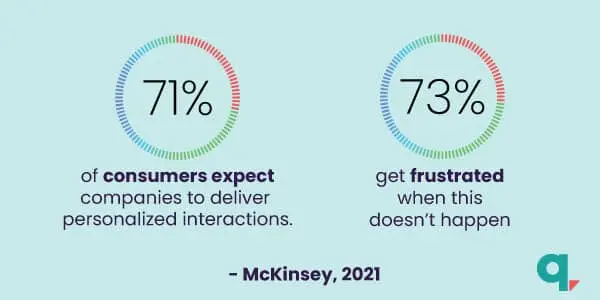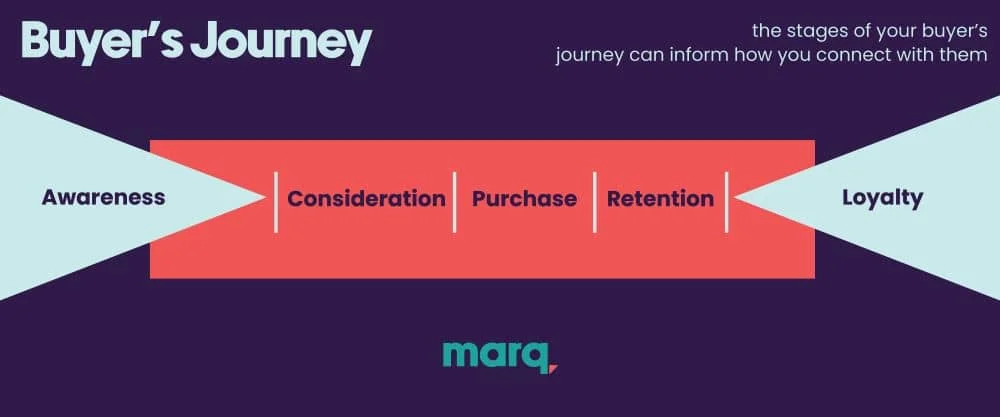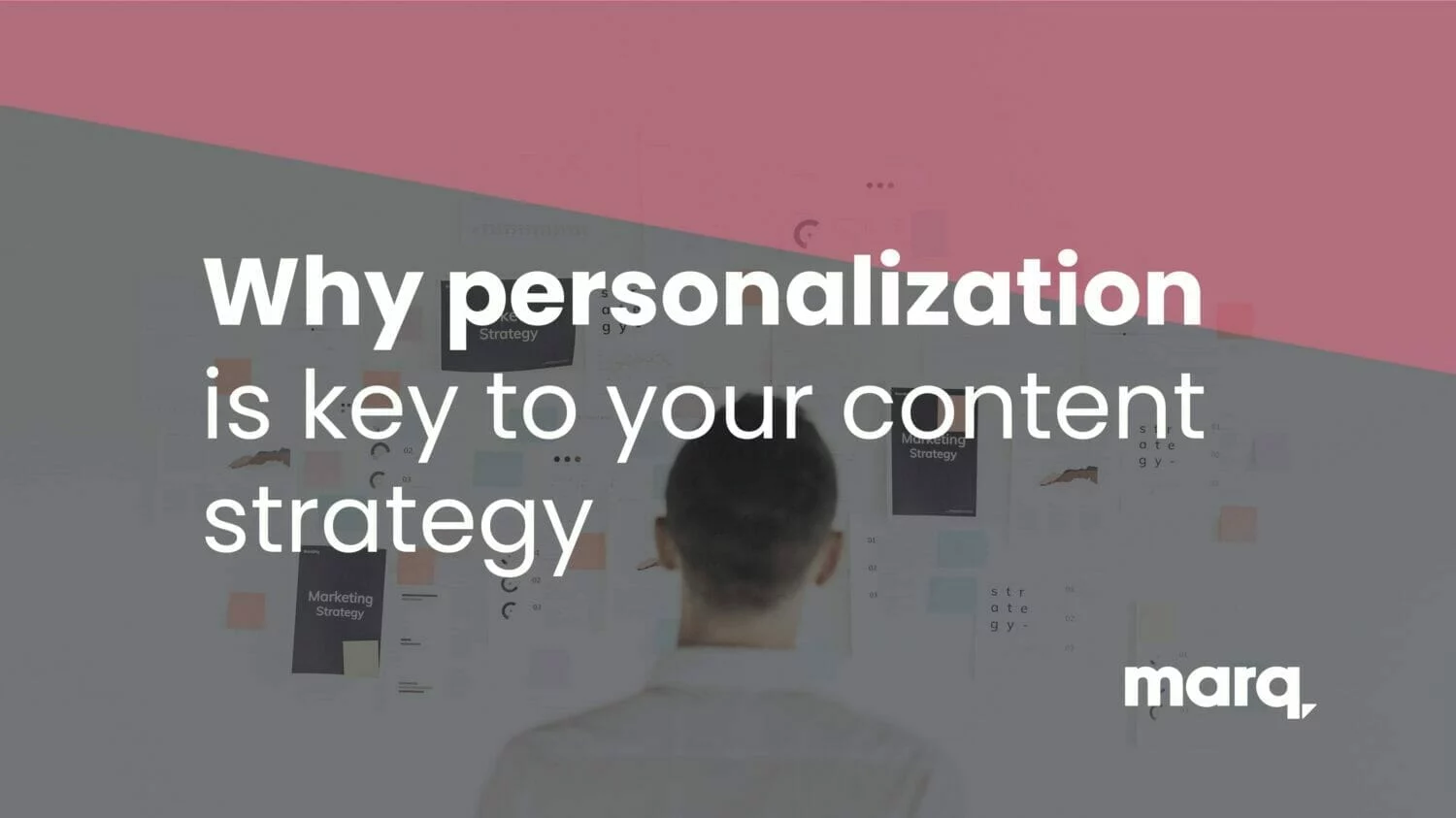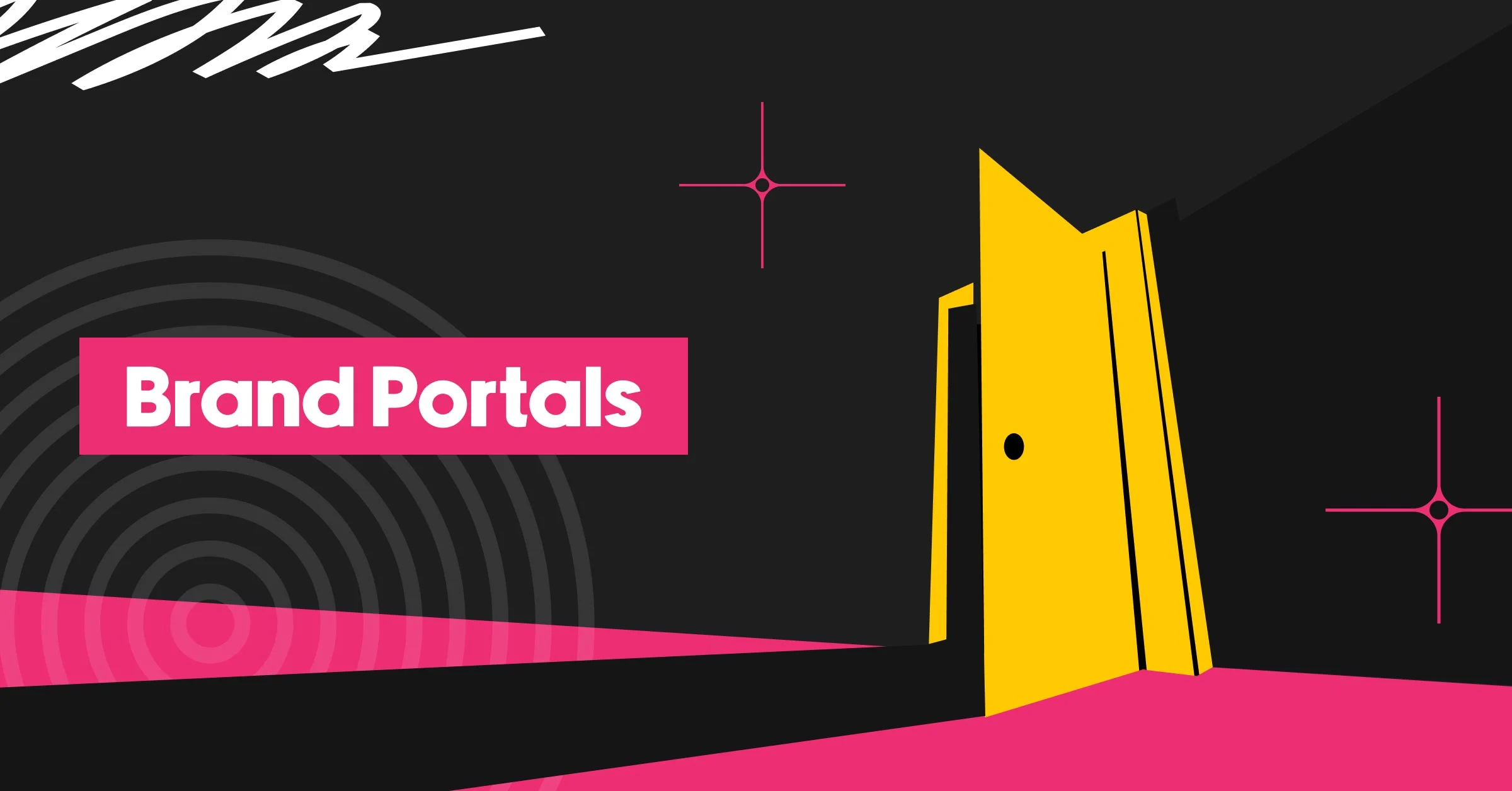Imagine with us your typical weekday morning. Perhaps your routine begins with checking the news cycle- eventually making your way to your email inbox, thumbing through the latest, archiving, and tagging as you go. The first hour of your Monday is likely focused on clearing notifications on various channels and involves a bit of a slow scroll. This drone-like monotony is the ultimate challenge for businesses. It feels next to impossible to stand out.
How can you capture your audience’s attention in a world of unsubscribes and endless content scrolling?
Yes, we are talking to YOU. Content personalization matters more than ever. Your customer demands a personal experience with your content to break through the noise.
We’ve partnered with businesses in various industries, from real estate to finance to healthcare, helping them carve out time in their daily content operations to personalize their content. The urgency to focus on content personalization is one of the top priorities for our customers. We want to share with you the overwhelming data that proves content personalization shapes your content strategy and give you the basics in how to implement it well.
In this article, you will learn:
- What is content personalization and why it matters
- What levels of personalization should you incorporate into your content personalization strategy
- What types of content should you personalize
- How to scale your content personalization strategy

If personalization is demanded and expected by your audience, what exactly is it, and why does it matter so much? Let’s dive in!
What is content personalization?
Content personalization is exactly what it sounds like -the application of unique identifiers and characteristics about your customer built into your marketing and communications. It makes your content personal. Sometimes, your content will speak to a broader audience, which has its place. Still, personalization allows you to relate to your customer more effectively and immediately provide a personal context to the problem that you solve.
If you consider your scrolling habits and reflect on what stops you in your tracks, it is likely the messaging that speaks to you. At the very least, the subject lines that call out your name and your company deserve a pause. But true mastery of content personalization takes it even further than that.
A quick example illustrates this best.
Here we apply a broader message and input personal characteristics to the statement.
Generic statement: “This product will change how you connect with your audience.”
Personalized statement: “This product will change how you connect with your patients.”
This simple tweak lets your target audience know, in this case, healthcare professionals, that your particular product solution is specific to them. Personalization, in this case, is “patients.” We’ll get into the layers of personalization later in this article. Still, the key takeaway here is to recognize the increase in content effectiveness when you take the time to relate to your audience on a deeper level.
To summarize, content personalization is the application of characteristics to better identify with your unique customer and helps your content resonate.
Personalization matters. How much? Well, quite a lot, it turns out.
1. 63% of marketers have observed personalization increases customer interactions and, ultimately, better conversion rates. (Statistica)
2. 97% of marketers witnessed a rise in business outcomes as a result of personalization (Salesforce)
3. 51% of marketers assert that personalization across multiple touchpoints increased ROI by 300% and more(KO Marketing)
Needless to say, personalization incorporated into your content marketing is a crucial piece of your overall strategy. When done well, your ability to capture your audience’s attention increases the potential for conversion.
It also means opportunity.
While your competitors are sending canned emails and flooding your potential buyers’ inboxes with mass emails, you have the opportunity to stand out by identifying the actual problems that your buyer faces every day. These key differentiators could be related to their industry or position within a company; it can also be specific to their target audience and your ability to help them connect with them. In either case, the opportunity to level with your audience with layers of personalization makes a difference.
25% of marketers attributed a spike in revenue greater than 20% due to personalization
Salesforce
There is a massive opportunity to drive revenue by incorporating content personalization in your marketing strategy. That said, the level of personalization from your first contact with a customer to the subsequent interactions should also follow a rhythm. Unfortunately, many of us have fallen victim to a first-contact email that feels like a little bit “too much.” We’ve also received emails that feel canned and impersonal. The balancing act of personalization must be refined for your audience to churn the results you seek.
A reasonable guide to follow is the more you interact with a potential customer and the further along in their buyer journey, the more personalized your messaging should become. Your initial connection could be by industry and role, but as the communication deepens, so should your personalization. Your content personalization strategy should include diving into those levels and layers and continually identifying how you can tailor your content even further.
What are these levels and layers that we speak of? Let’s talk about them.
Levels of content personalization
The layers of personalization can help you further relate as you continue to connect with your audience. Let’s first drop these into high-level categories to understand the levels of personalization.
Levels of content personalization
1. Industry/Market
2. Buyer/Customer Journey
3. Persona
As we get into the details of these, keep in mind that the cornerstone of content personalization is considering your audience’s individual needs. Those details will make a difference in how you communicate with them; each of these levels is meant to guide you in discovering who they are.
Industry/Market Segment
Personalization by industry or market segment is one of the key ways to adapt your messaging to reach your target audience. To do this effectively, you need to understand your target market and your market segments.
Even further, you need to understand the unique challenges each segment faces. This means that businesses in one segment may have deep teams with multiple managers and directors, but perhaps for another segment, teams are small and operating with fewer resources. By simply acknowledging their team size, you’ve incorporated a key factor that likely contributes to their buying decision.
Each segment will have specific terms and characteristics for its target audience. You need to learn them and know them. To build upon our example in the last section as it related to healthcare as the target industry, the personalization layer for the market segments within healthcare may look something like this:
Hospitals vs. Clinics vs. Private Practice
The type of care that each segment provides could be a valuable characteristic to include in your content personalization strategy. Including the specific terms and language that this segment would use helps your audience relate to your content more. They can see themselves in what you offer and are not required to fill in the gaps or try to understand how your product/service would apply to them.
Tip #1: When you personalize your product/solution, your audience can easily understand how you fit into their organizational puzzle.
To illustrate personalization by market segment for a different industry, let’s consider how it could apply to higher education. Universities operate under a large umbrella, but within their organization, they also have unique colleges and departments. Higher education has various groups and organizations that create even smaller segments. Fraternities and sports organizations. The levels within this segment go deep, and we haven’t even gotten down to the students.
You get the picture.
Content personalization by industry and/or market segment can dramatically change how you talk about your product/solution. The problems you solve in healthcare will look different than those you solve for financial institutions. To effectively personalize your content, you should plan to have thoroughly researched your target audience and incorporate that research into your personalization strategy.
Buyer Journey
The next level or layer of personalization to discuss is the stage in your buyer’s journey. Perhaps you are already doing it; it is a common one that most modern marketing strategies cover. By mapping the stages of your buyer’s journey, you can tailor your conversations to where they are at in the process to hopefully become a customer. But layer it in with other levels of personalization, and you increase your opportunities to convert. Whether your audience is in their first interaction with your brand or they have already converted and become a buyer, these stages of their journey should influence how you personalize your content, but it should be layered with the other characteristics that make them unique.
Each stage will provide a different lens to inform your content personalization strategy.

1. Awareness
Your personalization strategy may be more specific to your customer’s problems in their unique market segment. Your goal here is to help them identify the problem within their own organization and prompt them to consider your solution. Ask the question, how did they learn about you? Did they find you via Google search, or was this an in-person event interaction? Your message will change depending on your answer.
2. Consideration
In the consideration stage of the buyer’s journey, your messaging will be more pointed. The specific benefits of your solution and the opportunity to paint the picture of a personalized solution is easier. Remember, they have already decided that they have a problem, and you are an option for them.
Think about the emails that you personally receive and the ones that resonate with you. You likely prefer the ones that recall your last interaction or, at least, identify with your position or stage in the process.
3. Purchase
Your personalization strategy in this phase will ensure they successfully adopt your solution, and the process will be smooth. Your content in this stage should not continue to talk about the problem; they already bought in. You want to help them make the most out of your solution. Personalize the message around their great choice and how they will continue to reap the benefits.
4. Retention
There is a delicate balance in this stage. Your content personalization strategy should be focused on keeping your customer engaged with your solution and happy. This means communicating updates that will specifically impact how they interact with you and your solution and feedback to ensure they are happy with their decision.
5. Loyalty
Loyal customers want personalized engagement that recognizes their loyalty. It sounds simple, but there is nothing more irritating than receiving an email asking if you’d be interested in talking about their solution when you’ve been paying for the service for a year. Personalization at every stage in the customer journey requires a different approach and message.
If your content is tailored to the stage your customer is in, it will increase the likelihood that it will resonate.
Content personalization can even move beyond the buyer journey and even attract those who didn’t convert. If you map the stages, you can also track the reasons why they didn’t convert. Later down the road, you can use this information to draw them back in.
Perhaps you roll out a new feature that was important to them, but your solution didn’t offer it at the time when they were in the consideration phase. Now, you can take the time to reach out, recap why they chose not to go with your solution, and tell them why now might be a good time for them to reconsider.
Persona
Influencing your personalization strategy by including the unique personas of your audience can change your content game in a big way. When you aren’t just talking specifics about the industry they work in but also recognizing the challenges they face because of their role in their organization, your message resonates even further. Your audience personas include job titles and manager vs. support staff positions- this matters because it will help define if they are a decision maker or decision influencers.
Sometimes, you will hear a customer say, “my team would love this!” This means they are influenced by their team, which will come into play when making a decision.
That said, if you focus all of your personalization strategies on the influencers and not on the decision-makers themselves, you may find out they don’t have the budget or that there were larger factors at play that the influencers were unaware of.
Each of these unique layers of personalization builds on each other, and when you include all of the ingredients in your content marketing, you’ll not only have covered your bases, you’ll have knocked it out of the park.
What types of content should you personalize?
As a general rule of thumb, when you have the opportunity to personalize your content, you should. In many cases, this can be applied to all forms of content across all channels. When targeting is an option, personalization becomes easier to execute. If you can tailor your message to attract a specific group within your audience, it can make a big impact.
99% of marketers agree that personalization helps advance customer relationships (Salesforce)
In the same study conducted by Salesforce, personalization usage varied by channel. The reported success in personalization is overwhelmingly evident. 85% of marketers plan to make it even a bigger priority! It is fair to say that if you have the opportunity, take it.
Let’s talk about what this looks like in practice. Here are a few examples of types of content that marketers personalize and how you can think about applying the levels of personalization that we discussed earlier to each of these channels.
Email
Email personalization can look like incorporating the individuals’ names and organizations in the subject lines and body copy, but it can also go even further. When emails layer the personalization levels, like specific pain points they experience in their industry or role, the email has a more immediate impact.
How impactful, you might wonder?
Marketers who employ personalization in their emails report 27% higher unique click rates and 11% higher open rates than those who do not (Benchmark)
If you aren’t currently using personalization in your email communications, now is a great time to start. Due to the personal nature of email and the direct line of communication from your business to their inbox, it makes sense why 78% of marketers use personalization as a part of their email marketing strategy (Salesforce).
It can feel almost instinctual to keep things formal, but the more human you can make your emails, the more likely the human on the receiving end will feel like they are talking to someone instead of a robot. A great way to implement personalization in your emails is to iterate on different ways to talk about your product depending on who you are talking to and from whom the email is sent.
Our team does this a lot. We come together as a group and ask if certain terms and words will resonate, often making adjustments when it doesn’t sound quite right or if there are objections.
Play with your hellos. They will vary from hey to hi, and the closing call-to-action may use language like “let me know when is a good time” to “let’s set up a time to chat.” These slight changes may seem small, but you’ll be surprised by the difference it makes.
Components of an email you can apply personalization:
- Sender
- Subject line
- Greeting
- Body copy (incorporating industry and role-specific information)
- Closing
- Signature
Remember, that unsubscribe button is a click away, and your audience will only agree to receive emails if they are valuable to them. Their attention is fragile, and you need to add a personal touch to tailor your email communications to their needs.
Website
Your content personalization strategy for your website will likely vary from page to page. While your homepage will likely aim to target the broader audience, incorporating industry and solution-specific use cases can help the segmented groups within your audience more easily identify with your brand. 56% of marketers incorporate personalization into their website content (Salesforce).
The levels of personalization can help drive the content for your website and even guide the production of new content. You can leverage your blog to speak to a specific subset of your audience and personalize the way you write about your product based on the topic you are delivering on. A great example of this is this very article. While we are talking about content personalization strategy in a more generic context, we can easily take this further by demonstrating how segments within our target audience can apply these principles to their audience. In fact, we probably will.
Another great way to incorporate content personalization on your website is to create targeted landing pages. These pages can be tied to your online ads or social campaigns and can include specific messaging acknowledging the avenue in which they arrived on your website. This also helps with tracking traffic and attributing success to a specific campaign.
Other channels
Let’s consider the email and website channels we already discussed and consider how we personalize those specific content channels. We can apply similar principles to other forms of content marketing as well.
Oftentimes, we go through the trouble of targeting our online advertising but miss that personal touch to the campaign itself. An example of this in practice would be a geo-tracking campaign. Perhaps you want to target a group of individuals who attended a conference that you attended; your ad should mention the conference or the topics discussed so they can easily relate and recognize an experience that should still be top of mind for them.
Another example of content personalization done well in practice is targeted social campaigns. If you make the time and effort to specify your audience, be sure to check your message against the audience you are speaking to. It is a simple step that is so easily missed. Your audience doesn’t want a generic solution, they want a solution that will work for their specific circumstances.
Keep this in mind as you build your campaigns.
How to successfully scale your content personalization strategy
We’ve covered some great tips and principles for you to effectively personalize, but you may need some advice on how to do it at scale, especially if you have a smaller content and marketing team, which we’ve found is the case for 53% of organizations (Content Marketing Institute). With that said, small teams can still execute on personalization, and we’ve outlined how to do it.
Here are some quick tips to implement content personalization in your overall strategy, make scalability possible, and ensure your path to success.
1. Do not underestimate the importance of data.
To personalize your content well, you need to know your audience deeply. It is valuable to invest in data to help inform your personalization strategy, and it will play a key role in your success.
2. Manage time as your most valuable resource and asset
The resource we all wish we had an abundance of is time, and personalization does require a time investment to make it work. But, when content personalization is applied across multiple touchpoints, you can increase ROI by 300%. (KO Marketing). It’s simple, make it a priority, and your organization will benefit.
3. Automate when you have the opportunity to do so.
This may sound crazy, but there are ways to automate your content creation process, so you have more time to personalize your content. Automate your busy work and enable faster creation to expedite creation. Even better, when you can automate portions of your content, you give your team more confidence to execute well.
4. Revisit your content often and try new things!
What’s done is never done is a good rule to adopt for your content. You can always iterate on how you talk about your product or solution. As you learn more about your audience and their challenges, you can personalize your content even further.
Let’s wrap it up.
We covered the whats, and why’s of content personalization and delivered some tips on implementing it across your content channels. To save even more time on content creation and dedicate more time to personalization, take a look at our post on brand templating. Brand templating is the modern way to manage your brand, and Marq can help you do that.
To learn more about how Marq can help you scale your content personalization and build content that resonates with your audience, schedule a 1:1 with our team. You can bet that we’ll personalize the experience for you.



